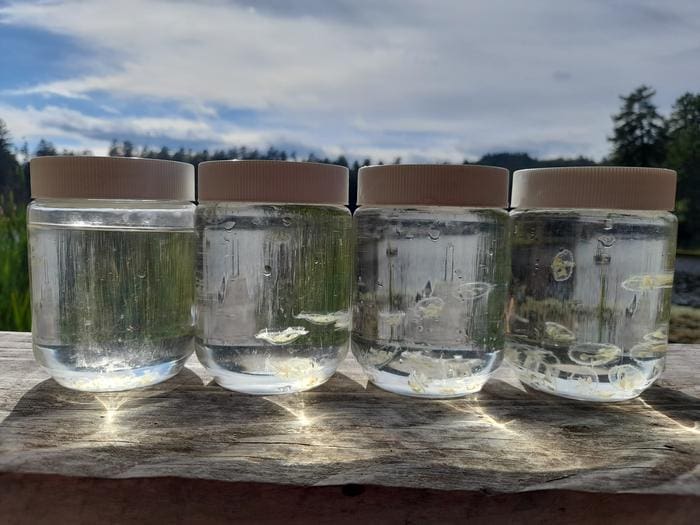A recent study conducted by researchers at the University of British Columbia (UBC) has uncovered the rapid proliferation of an invasive freshwater jellyfish species in British Columbia’s (B.C.) lakes. The peach blossom jellyfish, Craspedacusta sowerbii, originally from China, has been observed in thousands across the province, marking its furthest northern spread in North America. The study suggests that sightings of these jellyfish could increase significantly in the coming years as climate change continues to influence the region’s ecosystems.

Jellyfish in B.C. – a growing concern
The peach blossom jellyfish was first reported in B.C. in 1990, primarily in the Lower Mainland, Vancouver Island, and the Sunshine Coast. More recently, sightings have been reported as far inland as Osoyoos Lake. Over the past 34 years, there have been 85 recorded sightings, with each sighting potentially involving thousands of jellyfish. Researchers predict a sharp increase in sightings within this decade, potentially doubling the number observed in previous years.
Dr. Florian Lüskow, who conducted the research during his postdoctoral fellowship at UBC’s Department of Earth, Ocean and Atmospheric Sciences (EOAS), explained the situation: “This is an introduced jellyfish species from China which has spread around the world. We know very little about how they affect ecosystems and biodiversity in Canada because the research hasn’t been done yet. The worry is that they harm indigenous species by outcompeting them.”
The study revealed that all the jellyfish examined – about 100 in total – were male and genetically identical, indicating that the population consists of clones originating from a single polyp or a small group of polyps. These polyps, the jellyfish’s bottom-dwelling stage, can be extremely difficult to locate, residing in shallow areas on rocks or submerged debris.
The role of climate change
The research highlights the potential impact of climate change on the spread of these jellyfish.
“B.C. is the northernmost point in this continent for the peach blossom jellyfish’s range. It relies on mild winters and high summer temperatures to reproduce,” said Dr. Lüskow.
Dr. Evgeny Pakhomov, a professor in EOAS and the Institute for the Oceans and Fisheries (IOF) at UBC, noted that rising freshwater temperatures due to climate change could enable the jellyfish to expand their range even further, potentially reaching as far as Alaska. However, the researchers identified a possible limiting factor: the lack of genetic diversity within the population.
“So far only males, which are genetically identical, have been observed. This means that the jellyfish cannot complete their sexual reproduction and thus its adaptation to new environments will be limited,” Dr. Pakhomov explained.
Next steps in research
The researchers emphasize the need for a two-pronged approach to address the jellyfish invasion. First, they aim to map the jellyfish’s distribution more accurately across B.C. Second, they plan to assess the impact of the jellyfish on local freshwater ecosystems, including its potential effects on species like young salmon.
Dr. Lüskow mentioned that one of the tools they plan to use is environmental DNA (eDNA) sampling, which would help detect the presence of jellyfish even when they are not visible. Additionally, the researchers are encouraging public participation in tracking the jellyfish. “People who spot a peach blossom jellyfish can submit a report to iNaturalist, the Invasive Species Council of BC, or to us,” he said.
The findings of this study, published in the Canadian Journal of Zoology, provide crucial insights into the behavior and potential risks of this invasive species in B.C.’s waters. As the jellyfish continue to spread, the research underscores the importance of monitoring and managing their impact on the region’s ecosystems.
Journal Reference:
Lüskow, F., & Pakhomov, E. A., ‘Spatiotemporal distribution of the non-indigenous peach blossom jellyfish Craspedacusta sowerbii in British Columbia, Canada’, Canadian Journal of Zoology 102(9), 735-745 (2024). DOI: 10.1139/cjz-2024-0007
Article Source:
Press Release/Material by University of British Columbia
Featured image credit: James Wheeler | Pexels




